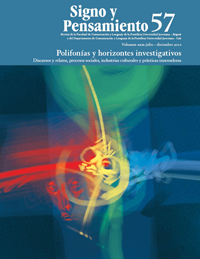Abstract
Starting from the classical notion of document, we analyze the conceptual evolution of the concept while considering the perspectives of “form”, “sign”, and “medium” and bearing in mind, in each case, the changes undergone by this notion by comparing the differences between document and electronic document that information technology and communications have brought forward. In doing so, we attempt defining the concept of “hyperdocument” from a documentation perspective capable of becoming a suitable content tool for Web 2.0 to properly display its digital information in order to be reused in accordance to the functions which the user establishes.
Cabré, M. T. (1993), La terminología: teoría, metodología y aplicaciones, Barcelona, Empúries.
Cacaly, S. et al. (2004), Diccionario de la información, 2.ª ed., París, Armand Colin.
Calzada, F. J. (2009), Los objetos de aprendizaje en la educación superior: fundamentos, tratamiento y recuperación en repositorios y bibliotecas digitales educativas [tesis] [en prensa], Madrid, Universidad Carlos III.
Catts, R.; Lau, J. (2008), Towards Information Literacy Indicators [en línea], unesco, disponible en: http://www.ifla.org/files/informationliteracy/publications/towards-informationliteracy_2008-en.pdf. Codina, L. (2000), El libro digital y la www, Madrid, Taurus.
Lamarca, M. J. (2010), Hipertexto: El nuevo concepto de documento en la cultura de la imagen [en línea], disponible en: http://www.hipertexto. info/, recuperado: 17 de agosto de 2010.
Lévy, P. (1999), ¿Qué es lo virtual?, Barcelona, Paidós.
Martin, J. (1990), Hyperdocuments & How to Create Them, Englewood Cliffs, Prentice-Hall.
Marzal, M. A. (2008), “La irresistible ascensión del crai en universidad” [en línea], Pontodeacesso, vol. 2, núm. 1,disponible en http://www.portalseer.ufba.br/index.php/revistaici/issue/view/325, recuperado: 25 de septiembre de 2009, pp. 72-97.
Marzal, M. A.; Calzada, F. J., y Vianello, M. (2008), “Criterios para la evaluación de la usabilidad de los recursos educativos virtuales: un análisis desde la alfabetización en información”, Information Research [en línea], vol. 13, núm. 4, disponible en: http://informationr.net/ir/13-4/ paper387.html, recuperado: 17 de agosto de 2010.
Millar, R. H. (2002), E-learning Site Usability Checklist [en línea], disponible en: http:// www.stcsig.org/usability/resources/toolkit/elearning-checklist.doc, recuperado: 17 de agosto de 2010.
Pédauque, R. T. (2003), Document: form, sign and medium, as reformulated for electronic documents [en línea], disponible en: http://archivesic.ccsd.cnrs.fr/documents/ archives0/00/00/05/94/sic_00000594_01/ sic_00000594.pdf., recuperado: 17 de septiembre de 2009.
Quéau, P. H. (1995), Lo virtual: virtudes y vértigos, Barcelona, Paidós Ibérica.
Rosenfeld, L. (2000), Arquitectura de la información para el www: diseño de sitios web de gran escala, México, MacGraw-Hill. Unesco, Infolit Global [en línea], disponible en: http://www.infolitglobal.info/en/, recuperado: septiembre 17 de 2009.
This journal is registered under a Creative Commons Attribution 4.0 International Public License. Thus, this work may be reproduced, distributed, and publicly shared in digital format, as long as the names of the authors and Pontificia Universidad Javeriana are acknowledged. Others are allowed to quote, adapt, transform, auto-archive, republish, and create based on this material, for any purpose (even commercial ones), provided the authorship is duly acknowledged, a link to the original work is provided, and it is specified if changes have been made. Pontificia Universidad Javeriana does not hold the rights of published works and the authors are solely responsible for the contents of their works; they keep the moral, intellectual, privacy, and publicity rights.
Approving the intervention of the work (review, copy-editing, translation, layout) and the following outreach, are granted through an use license and not through an assignment of rights. This means the journal and Pontificia Universidad Javeriana cannot be held responsible for any ethical malpractice by the authors. As a consequence of the protection granted by the use license, the journal is not required to publish recantations or modify information already published, unless the errata stems from the editorial management process. Publishing contents in this journal does not generate royalties for contributors.


